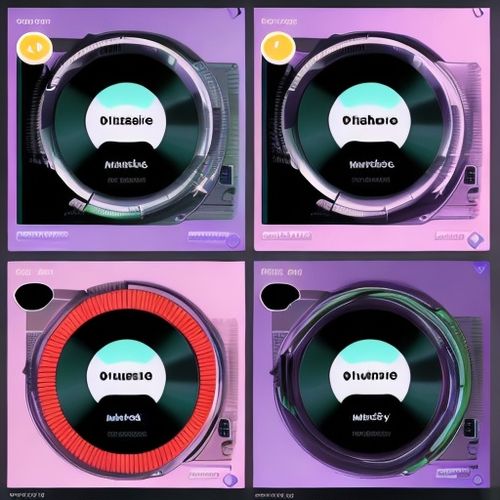The Enigmatic Code of Jazz Improvisation: Unlocking the 2-5-1 Harmonic Progression
Jazz improvisation is often described as a language, a fluid conversation between musicians where spontaneity and structure coexist. At the heart of this dialogue lies the 2-5-1 harmonic progression, a foundational cipher that has shaped the vocabulary of jazz for decades. This progression isn’t just a sequence of chords; it’s a gateway to understanding the syntax of improvisation, a hidden code that unlocks endless creative possibilities.
The 2-5-1 progression, rooted in functional harmony, serves as the backbone of countless jazz standards. Its ubiquity makes it essential for any improviser to master, yet its simplicity belies the depth of expression it can facilitate. The magic of this progression lies in its ability to create tension and resolution, a musical narrative that mirrors the ebb and flow of human emotion. When a musician internalizes this movement, they gain access to a shared lexicon, a way to speak fluently in the ever-evolving dialect of jazz.
Deciphering the Harmonic Language
To the untrained ear, the 2-5-1 might sound like just another chord change. But for jazz musicians, it’s a canvas for storytelling. The progression typically moves from the ii chord (often a minor seventh), to the V chord (a dominant seventh), and finally resolves to the I chord (a major seventh or triad). This movement creates a sense of departure and return, a harmonic journey that feels both inevitable and surprising. The tension built by the dominant V chord yearns for resolution, and when it lands on the tonic I chord, there’s a satisfying sense of homecoming.
What makes the 2-5-1 so powerful is its adaptability. It can be reharmonized, substituted, and embellished in countless ways, allowing each musician to put their unique stamp on it. A pianist might voice the chords with lush extensions, while a saxophonist might weave chromatic passing tones around the changes. The progression is a framework, not a cage, and its flexibility is what keeps it fresh across generations of players.
The Improviser’s Toolkit
Navigating the 2-5-1 requires more than just knowing the chords—it demands an intuitive grasp of melodic phrasing and rhythmic nuance. Improvisers often rely on guide tones, the third and seventh of each chord, to outline the harmony with minimal notes. These tones act as signposts, guiding the listener through the progression even when the lines become intricate. A well-placed guide tone can say more than a flurry of notes, and the best improvisers understand the power of restraint.
Another critical tool is the use of chord-scale theory, which assigns specific scales to each chord in the progression. For instance, over a ii minor seventh chord, a Dorian scale might be employed, while the V dominant seventh could invite a Mixolydian or altered scale. These scales provide a palette of colors, allowing the improviser to paint with shifting tonalities. Yet, theory alone isn’t enough—the real art lies in knowing when to adhere to the rules and when to break them.
The Legacy of the 2-5-1
The 2-5-1 progression isn’t just a technical exercise; it’s a living tradition. From the bebop pioneers like Charlie Parker, who used it as a springboard for dizzying chromatic runs, to modern innovators like Brad Mehldau, who reimagines it with contemporary harmonic twists, the progression has been a constant thread in jazz’s evolution. It’s a testament to the genre’s ability to balance tradition and innovation, a code that remains relevant because it’s endlessly reinterpretable.
For aspiring jazz musicians, mastering the 2-5-1 is a rite of passage. It’s a progression that reveals its secrets slowly, rewarding deep study with newfound freedom. And for listeners, recognizing its presence adds a layer of appreciation, a way to hear the hidden architecture beneath the spontaneity. In the end, the 2-5-1 is more than a harmonic device—it’s a key to understanding the soul of jazz itself.

By /May 30, 2025

By /May 30, 2025

By /May 30, 2025

By /May 30, 2025

By /May 30, 2025

By William Miller/Apr 13, 2025

By Daniel Scott/Apr 13, 2025

By Benjamin Evans/Dec 25, 2024

By George Bailey/Dec 25, 2024

By Lily Simpson/Dec 25, 2024

By Olivia Reed/Dec 25, 2024

By Christopher Harris/Dec 25, 2024

By Sarah Davis/Dec 25, 2024

By Natalie Campbell/Dec 25, 2024

By William Miller/Dec 25, 2024

By Olivia Reed/Dec 25, 2024

By John Smith/Dec 25, 2024